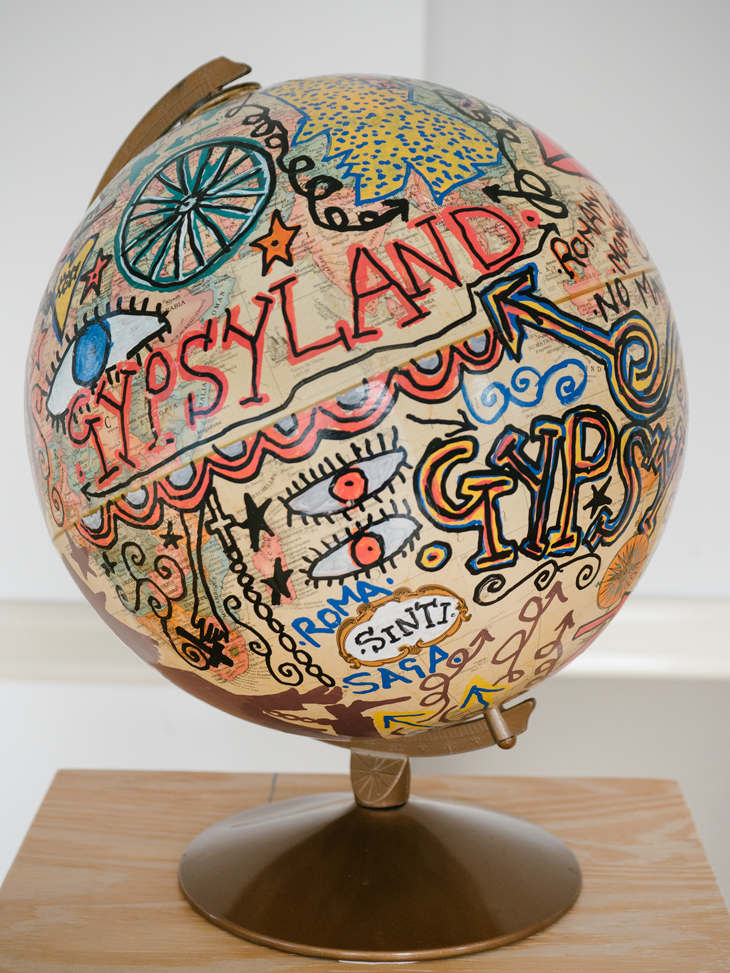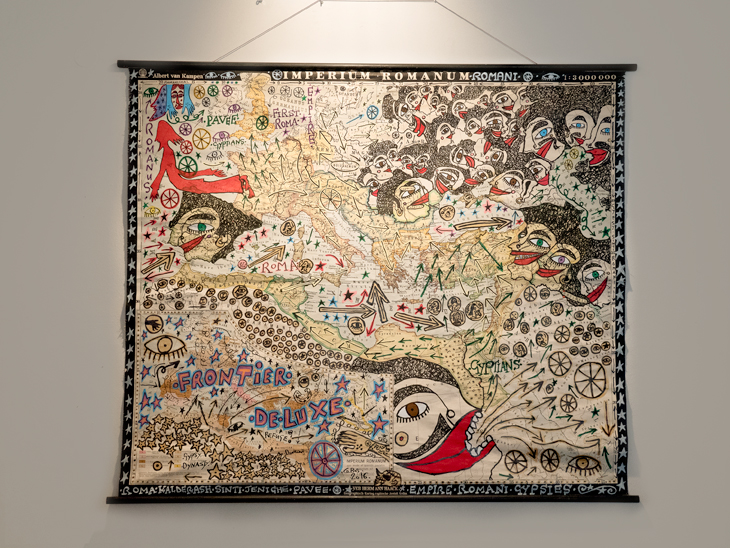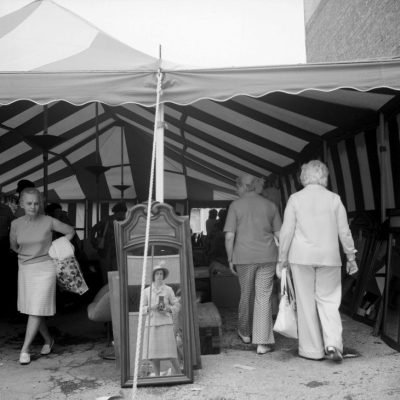‘Is it in Berlin or Rome?’ So a friend asked me when I told him I’d be participating in the first Roma Biennale, which took place in the German capital earlier this month. For the Romani population of Europe – which numbers between 10 and 12 million, or more than twice the population of Ireland – even apparently simple issues around nomenclature can be fiendishly hard to unpick.
Can we agree on a single name for ourselves, when there are dozens of Romani subgroups, some of whom despise each other? Should we worry that many Romanians believe we stole their name, even though Roma is an Indic word and Romania itself derives from Rome? Do we embrace the many names outsiders have given us (Gypsies, Çigany, ‘Pilgrims of the Mist’) or try to destroy them? Most of those who have been traditionally referred to in English as Gypsies use the name Roma (an endonym from the Romani language) – but not all.
In Germany, one thing is for sure: the Sinti – Romanies of the German-speaking lands – have rejected the word Zigeuner, the name the Nazis called them and under which they were horrifically persecuted. Hundreds of thousands were murdered during the National Socialist period, in concentration camps and masserschiessungen (‘mass shootings’) from the Caucasus to the foothills of the Pyrenees. A long and hard-fought civil rights campaign, spearheaded by the activist Romani Rose (13 of whose relatives were murdered in the death camps) led the West German government to recognise the ‘forgotten Holocaust’ of the Sinti and Roma in 1983.
Prior to that, many politicians and historians had maintained that, unlike the Jews, Gypsies had not been targeted on racial grounds, but because they were work-shy and asocial: thus did the Nazi view survive the end of the war by almost 40 years. In 2012 a memorial to the Baro Porrajmos – Romani for ‘great devouring’ – was finally erected in the shadow of the Reichstag. Designed by the Israeli artist Dani Karavan, it comprises a dark pool of water, surrounded by concrete fragments on which the names of concentration camps are engraved. The effect is that of an eye, bereft of light and crying tears of stone.
Berlin seems the perfect location for a ‘Roma Biennale’, then: an event celebrating the artistic self-determination of a people who have never had a country of our own. The Biennale was the brainchild of my father, the British artist Damian Le Bas, who died unexpectedly in December at the age of 54. It was co-curated in his memory by his wife Delaine Le Bas, the Berlin-based Roma actor and activist Hamze Bytyci, and Bytyci’s partner Veronika Patočkova.
The Roma Nation Day parade in Berlin, April 2018. © Nihad Nino Pusija

Hosted by the Maxim Gorki theatre, the first Roma Biennale focused on theatrical and performance art, alongside a retrospective of work by Damian Le Bas (until 30 April) and a major parade to celebrate Roma Nation Day (8 April). The parade featured a float covered in smiling ‘Gypsy clouds’ designed by the late artist, and from its speakers flowed Romani, Middle Eastern and Klezmer-inspired house music, selected by DJ László Farkas, and speeches calling for support from feminists and from a nearby demonstration of a pan-European solidarity group. It culminated at the Brandenburg Gate, before Bytyci and Le Bas hosted guests at the ‘Hilton Zimmer’, a set decked out by Gorki theatre staff to resemble a luxury hotel room. Romanies in drag costume, sparkling matador outfits, and Liz Taylor-style Cleopatra wigs fielded questions from the audience about politics and art on a 1950s telephone.
Gypsyland Globe, Damian Le Bas. © Stephanie Ballantine

Damian Le Bas worked predominantly on maps, globes and discarded packaging. Covering these mass-produced items in thousands of faces, slogans and symbols beloved of ethnic Travellers – horseshoes, hearts, four-leafed clovers and staring eyes – his work both questioned the solidity of Europe’s borders and showed that art can provide an alternative future for much that we throw away.
Imperium Romanum Romani, Damian Le Bas © Stephanie Ballantine

Le Bas also designed the set for Roma Armee, a play that has been running at the Gorki since the autumn, in which a cast of Roma actors and their non-Roma accomplices explore what it means to be the only people that have never started a war. Has the time come to resort to violent means, they ask, or would the Roma people end up taking each other out? A vast map overhangs the stage, blazoned with the words ‘GYPSYLAND EUROPA’. Operatic singing, machine guns, Carmen ruffles and fishnet stockings make for a distinctly Gypsy take on political queerness and radical diversity: Rocky Horror meets the prospect of Romani paramilitarism. No sooner is this ‘militia of the outcasts’ formed than it turns its guns on itself, in one of the play’s most darkly comic scenes.
A scene from Roma Armee at the Maxim Gorki Theater, Berlin. © Ute Langkafel

At the Long Night of Coming Out evening, a stage dressed to resemble outer space played host to a range of of performance pieces by Romani artists from across Europe. A futuristic sisterhood of Romani alchemists claimed to possess the secret of human survival. The ghost of Heathcliff appeared in a straitjacket to ask why his Gypsy ethnicity had been whitewashed from so many interpretations of Wuthering Heights. There were raps about teenage identity struggles and being seen as an alien wherever you go.
Another focus was the Sinto boxing champion Johann Trollman (1907–43). He was the subject of a soaring ballad, and a female boxer told of how she had been inspired by his defiance of the Nazis: on once occasion, he bleached his hair and covered his skin with white powder when forced to fight an ‘Aryan hero’ in a plodding, un-Romani style. He was later murdered by a kapo whom he had outboxed in a concentration camp.
A wide-eyed, willowy extra terrestrial explained that she had come to live amongst Gypsies because they inhabit all nations and every tier of human life. She was trying to look on the bright side: the hunger, threats and abuse she had suffered while living as a Gypsy had taught her valuable lessons about the nature of reality. Like the Roma, she had become used to searching for the silver lining inside every ‘Gypsy cloud’.
Damian Le Bas Jr is the author of The Stopping Places: A Journey Through Gypsy Britain (Penguin, forthcoming).


